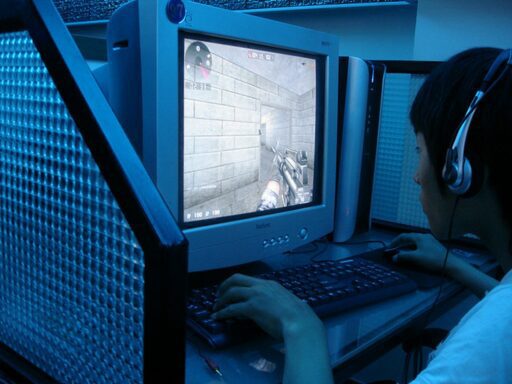The ‘Evolution Board Game’ offers a unique blend of strategy, adaptation, and survival, drawing players into the ancient world of prehistoric life. Through carefully crafted mechanics and engaging design, the game not only entertains but also educates on the principles of evolution. This article delves into the essence of the game, its historical roots, aesthetic choices, philosophical themes, and the reception it has garnered within the gaming community.
Key Takeaways
- The game mechanics of ‘Evolution’ ingeniously simulate the principles of natural selection and survival, challenging players to adapt their species to an ever-changing environment.
- Evolution-themed board games have a rich history, with connections to ancient games that reflect the human fascination with survival and adaptation long before modern scientific understanding.
- The artistic direction of ‘Evolution’ enhances the gameplay experience, with design elements that vividly bring the prehistoric era to life and facilitate player immersion.
- Beyond entertainment, ‘Evolution’ serves as an educational tool, sparking discussions on natural selection, intelligent design, and real-world scientific debates in an accessible format.
- The ‘Evolution Board Game’ has received critical acclaim for its production quality and has influenced the social dynamics of gaming, while inviting comparisons with other evolutionary titles.
The Essence of Evolution in Gameplay

Card Mechanics and Strategy
In the Evolution board game, players must navigate the delicate balance between growth and sustainability. Each species must be carefully evolved to survive in an ever-changing environment, where food is scarce and predators lurk. The strategic use of cards is paramount; they represent various traits that can be added to a player’s species, such as ‘Long Neck’ for reaching food or ‘Carnivorous’ for turning to predation.
- Trait Cards: Define the abilities and characteristics of species.
- Population and Body Size: Determine the survivability and competitive edge.
- Food Cards: Dictate the available resources each turn.
The first lesson this game teaches you: there is no fortune to be made in science. Only victory points.
The interplay between these elements requires foresight and adaptability. Players must anticipate opponents’ moves and adapt their strategy accordingly, ensuring their species are fit enough to survive until the next round. The game is a testament to the intricate dance of natural selection, where only the most adaptable can claim victory.
Adaptation and Survival Elements
In the Evolution board game, the core challenge lies in the players’ ability to adapt their species to a constantly changing environment. The strategic use of cards is pivotal to ensure survival and dominance. Each card represents a unique trait that can be added to a species, providing advantages such as long necks for reaching food or hard shells for protection against predators.
- Trait Cards: Determine the abilities and advantages of species.
- Food Availability: Influences population growth and survival.
- Predation: Introduces risk and requires defensive adaptations.
Adaptation in Evolution is not just about the survival of the fittest, but also about the most cunning and resourceful. Players must anticipate changes and react accordingly, balancing the need for offense and defense, while ensuring their species can thrive in an ever-evolving ecosystem.
The game beautifully encapsulates the tension between competition and cooperation. As species evolve, they can become predators or form symbiotic relationships, affecting the entire ecosystem. This dynamic interplay ensures that no two games are ever the same, and the path to survival is always a delicate dance of strategic choices.
Player Interaction and Ecosystem Influence
In the Evolution board game, the dynamics of player interaction are pivotal to the unfolding narrative of survival. Players must constantly assess the strategies of their opponents to ensure the prosperity of their own species. This involves a delicate balance between competition and cooperation, as players can indirectly affect each other’s chances of survival through the ecosystem they collectively shape.
- Players can introduce new traits to their species, affecting not only their own game but also the strategies of others.
- The food availability in the communal watering hole is a shared resource that can become a point of contention.
- Predatory species can directly impact the survival of other players’ creatures, leading to a tense and dynamic game environment.
The interplay between different species and the shared ecosystem creates a complex web of interactions that mirrors the intricate balance found in nature. Each decision made by a player can ripple through the ecosystem, influencing the survival of species across the board.
The game’s design encourages a rich tapestry of interactions, where the fittest may not always be the strongest, but rather the most adaptable to the changing environment and the actions of other players. As highlighted in the title ‘Best Evolution-Themed Board Games In 2024 – TheGamer‘, evolution-themed board games like Evolution simulate biological evolution, where players adapt and evolve species to survive in a constantly changing landscape of player decisions and environmental shifts.
Historical Roots of Evolutionary Board Games

Prehistoric Inspirations
The allure of prehistory has long captivated the imagination of game designers, leading to the creation of board games that transport players back to the dawn of humanity. Evolution Board Game draws from a rich tapestry of prehistoric life, echoing the earliest human endeavors such as the creation of shell beads and the use of pigments for painting, as evidenced by archaeological finds in Israel and Algeria.
From the crafting of the first mariners’ boats to the hafting of hunting tools, these ancient innovations reflect a burgeoning human intellect and resourcefulness that are mirrored in the game’s mechanics. The game’s design pays homage to these primitive roots, challenging players to strategize and adapt in a manner reminiscent of our ancestors’ fight for survival.
The essence of prehistory is not just in the survival of the fittest, but in the creativity and adaptability of early humans.
The discovery of musical instruments and the earliest known cave art in Iberia suggest a complex social and cultural life that predates modern humans in Europe. These elements of prehistory provide a backdrop for the game, where players must navigate an ever-changing environment, much like the Neandertals who left their mark on the walls of ancient caves.
The Journey from Ancient Games to Modern Classics
The origins of board games can be traced back thousands of years, marking the beginning of a journey that would see these games evolve from simple pastimes to complex strategic experiences. Ancient civilizations like Egypt and Mesopotamia were the cradle for some of the earliest known board games, setting the foundation for a rich history of tabletop gaming.
Over the centuries, board games have undergone significant transformations. The classical antiquity and medieval era saw the emergence of games that not only served as entertainment but also as tools for social interaction, education, and even spiritual significance. This evolution continued through the Renaissance, where games became more refined and widespread, reflecting the cultural and intellectual growth of the time.
Today, modern classics have emerged, standing on the shoulders of these ancient games. They incorporate sophisticated mechanics and themes that resonate with contemporary audiences, yet they still echo the timeless appeal of their predecessors. The transition from ancient boards carved in stone to elegantly designed cardboard and digital interfaces is a testament to the enduring allure of board games.
Cultural Impact of Evolution-Themed Games
Evolution-themed games have not only provided entertainment but also influenced cultural perspectives on science and history. The interplay between gaming and education has sparked both interest and debate in the understanding of evolutionary concepts.
Evolution board games often serve as a bridge between complex scientific theories and accessible learning tools. They encourage players to engage with the principles of natural selection, adaptation, and survival in a hands-on manner. This has led to a broader appreciation of prehistoric life and the mechanisms that drive biodiversity.
The nuanced representation of evolution in these games challenges players to think critically about the natural world and their place within it.
The cultural dialogue surrounding these games frequently intersects with discussions on science education and the portrayal of evolution in media. As a result, they have become a subtle yet powerful medium for shaping public understanding of evolutionary science.
Design and Aesthetics of Evolution Board Game

Artistic Interpretation of Prehistory
The Evolution Board Game offers a window into the distant past, not just through its mechanics but also through its vivid artistic representation of prehistoric life. The artwork serves as a bridge, connecting players to an era long gone, yet fundamental to our existence.
The game’s illustrations draw inspiration from various prehistoric artifacts and sites, such as the ancient ‘paint factory’ unearthed in South Africa and the cave paintings in Spain, believed to be the work of Neanderthals. These elements of prehistory are thoughtfully woven into the game’s design, providing a rich tapestry that enhances the gaming experience.
The choice of colors, textures, and imagery in the game not only captivates the imagination but also educates players about the prehistoric world.
Here is a brief timeline of prehistoric milestones that have influenced the artistic direction of the game:
- 164 kya – 47 kya: Heat treating of stone blades in South Africa.
- 135 kya – 100 kya: Beads in Israel and Algeria.
- 100 kya: Compound paints and funerals in South Africa and Israel.
- 90 kya: Harpoons in the Democratic Republic of the Congo.
- 70 kya – 60 kya: Oldest arrows and needles at Sibudu, South Africa.
- 61 kya – 62 kya: Cave painting in Spain by Neanderthal.
This timeline not only reflects the depth of human creativity but also the evolution of artistic expression, which the game captures in its cards and components.
The Role of Design in Player Experience
The design of the Evolution Board Game is not just about aesthetics; it’s a crucial component that shapes the player’s journey through prehistory. The tactile feel of the cards, the vivid illustrations, and the coherent visual language all contribute to an immersive experience.
- The quality of materials used in the game pieces can affect how players perceive the game’s value and durability.
- Color schemes and iconography are carefully chosen to facilitate quick understanding and strategic decision-making.
- The layout of the game board and cards are designed to keep the focus on gameplay while minimizing distractions.
The design choices in Evolution are deliberate, aiming to create a seamless interface between the player and the complex strategies of survival and adaptation.
These elements of design are not merely decorative; they are integral to the storytelling and engagement of the game. By marrying form and function, the design of Evolution enhances the overall player experience, making each game not just a contest of survival but a journey through a prehistoric landscape.
Typography and Illustration Choices
The Evolution Board Game not only captivates players with its strategic depth but also through its visual and typographic presentation. The choice of typography in a game like Evolution is crucial as it must be readable at a glance, yet thematically appropriate to immerse players in the prehistoric setting.
- Typography: The fonts chosen often reflect a primal, earthy feel, complementing the game’s theme.
- Illustrations: Rich and detailed artwork brings the ancient world to life, with each card serving as a window into the prehistoric past.
The seamless integration of design elements enhances the overall player experience, making each game session not just a battle for survival, but a journey through time.
The illustrations, often praised for their accuracy and attention to detail, do more than beautify the game; they serve as a narrative device, telling the story of each species’ struggle and triumph. This combination of visual storytelling and strategic gameplay creates a compelling experience that resonates with players long after the game has ended.
Philosophical Underpinnings and Educational Value

Natural Selection vs. Intelligent Design in Gameplay
The Evolution Board Game cleverly incorporates the debate between natural selection and intelligent design into its gameplay mechanics. Players must navigate this dichotomy, deciding whether to adapt their species through random mutations and environmental challenges, indicative of natural selection, or to follow a path that seems to be guided by an unseen hand, a nod to the concept of intelligent design.
The game’s design challenges players to consider the implications of each approach on their species’ survival. This aspect not only adds depth to the strategy but also sparks conversation about the underlying principles of evolution.
- Natural Selection: Players rely on random card draws and adapt to the changing environment.
- Intelligent Design: Players may use specific cards to develop their species in a particular direction.
The interplay between these two concepts within the game serves as a microcosm for the larger debate, providing a platform for players to engage with these ideas in a tangible way.
Teaching Evolution Through Play
The Evolution Board Game stands out as an innovative approach to education, transforming the complex concepts of natural selection and adaptation into an engaging, hands-on experience. By simulating the survival challenges of species in a dynamically changing environment, players inherently grasp the principles of evolution.
Through strategic card play, individuals learn about the importance of traits and how they can lead to the success or extinction of a species. This interactive method of teaching allows players to experiment with various evolutionary strategies, providing a deeper understanding of the subject matter.
- Card Traits: Mimic real-life genetic variations
- Environmental Changes: Reflect the unpredictability of ecosystems
- Species Interactions: Demonstrate the complexity of food webs
The game’s mechanics subtly emphasize the role of random events and competition, mirroring the unpredictable nature of evolution itself.
By incorporating these elements, the Evolution Board Game serves as a powerful educational tool, offering insights into evolutionary biology that are both accessible and memorable.
The Game’s Reflection of Real-World Science Debates
The Evolution Board Game not only entertains but also mirrors the intense debates surrounding the origins of life that have permeated society. These discussions, which gained particular traction in the United States during the late eighties and nineties, revolve around the educational system’s role in presenting theories of Earth’s and humanity’s beginnings.
The game cleverly incorporates these themes, challenging players to consider the implications of natural selection versus intelligent design. It does so without prescribing to a single viewpoint, instead encouraging a dialogue reflective of real-world controversies.
In a nod to these debates, the game’s factions represent differing ideologies, often subverting expectations. For instance, a faction that might traditionally align with religious views instead champions natural selection, while another, seemingly secular group, may argue for intelligent design. This inversion of roles underscores the game’s commitment to fostering critical thinking and discussion among its players.
- The Amphibian faction endorses natural selection.
- The Arboreal faction supports intelligent design.
By engaging with these concepts, players are not only having fun but are also unwittingly participating in a larger conversation about science, philosophy, and education.
Community and Cultural Reception

Critical Acclaim and Production Quality
The Evolution Board Game has garnered significant attention for its high production quality and the depth of its gameplay. Players have noted the excellent quality of the pieces, which contributes to an immersive prehistoric gaming experience. The game typically unfolds over a span of 40 minutes, offering a satisfying balance between complexity and playtime. Although there is a learning curve, it is generally well-received once players familiarize themselves with the various card mechanics.
The game’s ability to blend educational content with engaging strategy has been a key factor in its critical success. It not only entertains but also enlightens, subtly teaching the principles of evolution and adaptation through its gameplay.
The table below summarizes the key aspects of the game’s reception:
| Aspect | Details |
|---|---|
| Production Quality | High-quality components and materials |
| Learning Curve | Manageable with initial guidance |
| Game Duration | Approximately 40 minutes per session |
| Educational Value | Integrates evolutionary concepts |
| Player Engagement | High, due to strategic depth |
The Social Dynamics of Evolution Gaming
The social dynamics of Evolution board games extend beyond mere competition; they foster a community where strategic alliances and betrayals mirror the unpredictable nature of survival. Players often find themselves in a delicate balance of cooperation and conflict, a dance that reflects the intricate interdependencies found in natural ecosystems. This aspect of gameplay not only enhances the fun but also deepens the understanding of evolutionary principles among participants.
- The game encourages discussion and negotiation, as players must often work together to fend off predators or share resources.
- It can lead to moments of tension and excitement, as alliances can shift with each turn, reflecting the ever-changing landscape of prehistoric life.
- The social aspect of the game can be a powerful tool for education, subtly teaching players about the importance of biodiversity and the consequences of ecological decisions.
The Evolution board game serves as a microcosm of prehistoric life, where social interactions can determine the fate of species. The game’s ability to simulate these dynamics offers a unique perspective on the importance of adaptability and strategic thinking in both the natural world and human society.
Comparative Analysis with Other Evolutionary Titles
When examining Evolution Board Game alongside its contemporaries, it becomes evident that each game offers a unique perspective on prehistoric life. For instance, King’s Chamber subverts traditional roles by having its Amphibian faction, often seen as religious, adopt a stance akin to natural selection, while the secular Arboreals favor intelligent design. This inversion of expectations provides a fresh take on the genre.
In contrast, games like Genesys and Evolution reveal a more conventional narrative approach, despite occasional lapses into outdated storytelling tropes. The Evolution Board Game, however, maintains a balance, avoiding such pitfalls and focusing on the scientific aspects of evolution.
The Evolution Board Game distinguishes itself by not only providing entertainment but also by subtly educating its players on the principles of natural selection and adaptation.
Comparing production aspects, we see that the Evolution Board Game scores high in design and typography, akin to the well-received Logos. Here’s a quick glance at how these games fare in production quality:
| Title | Cover Grade | Design & Typography | Editing | Marketing Copy |
|---|---|---|---|---|
| Logos | B+ | A- | A- | A |
| Evolution Board Game | A | A+ | A | A+ |
The Evolution Board Game not only competes well in its thematic niche but also stands out in its execution and presentation, contributing to its positive reception within the gaming community.
Conclusion
In the grand tapestry of human history, board games have served as a reflection of cultural intellect, strategy, and social interaction. ‘Evolution Board Game: Surviving Prehistory One Card at a Time’ not only pays homage to this rich tradition but also offers a unique window into the prehistoric past, allowing players to experience the ruthless beauty of natural selection and the strategic depth of species adaptation. As we’ve journeyed through the mechanics, strategies, and thematic elements of the game, it’s clear that Evolution stands as a testament to the enduring legacy of board games in human culture. Whether you’re a seasoned gamer or a curious newcomer, Evolution promises a compelling blend of educational insight and entertainment, ensuring that the primal struggle for survival continues to captivate our modern minds.
Frequently Asked Questions
What is the main objective of the Evolution board game?
The main objective of Evolution is to adapt your species to survive by eating, reproducing, and evolving as the environment changes, with the goal of maintaining a population that can gather enough food and avoid extinction.
Can you explain how the card mechanics influence strategy in Evolution?
Cards in Evolution represent various traits that players can use to evolve their species. Strategy comes into play as players must decide which traits to combine to protect their species from predators, compete for food, and adapt to the changing environment.
How does the Evolution board game reflect real-world science?
Evolution reflects real-world science by simulating natural selection and adaptation. Players’ species must adapt to survive based on the availability of resources and the presence of predators, mirroring the scientific principles of evolution.
Is Evolution a good educational tool for teaching about natural selection?
Yes, Evolution can be an excellent educational tool as it provides a hands-on experience of how species must adapt to their environment to survive, which is a core concept in understanding natural selection.
What makes the design and aesthetics of the Evolution board game stand out?
The design and aesthetics of Evolution are praised for their artistic interpretation of prehistoric life, with attention to detail in the illustrations and a cohesive design that enhances player experience and immersion in the game’s theme.
How has the community received the Evolution board game?
The community has generally received Evolution positively, appreciating its blend of strategic gameplay, educational value, and high-quality production. It has garnered critical acclaim and has a dedicated player base.





